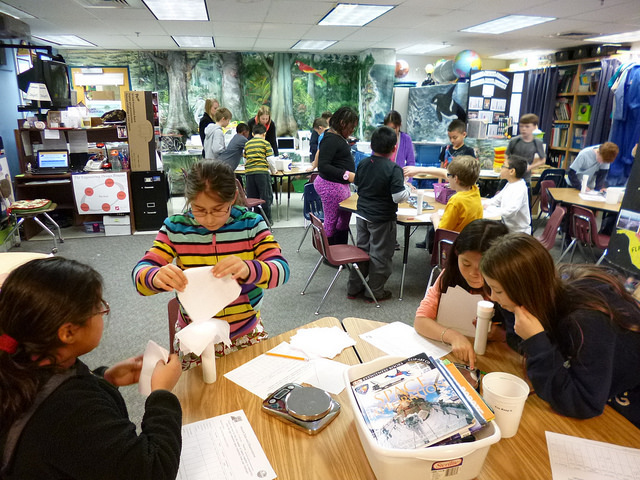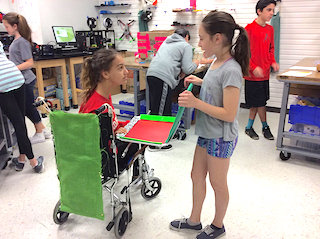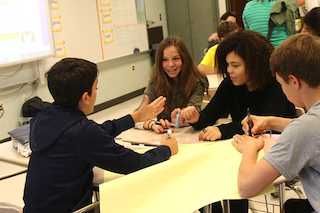How to Build a Tight-Knit Classroom Community
 By Julia G. Thompson
By Julia G. Thompson
At first glance, creating a classroom community may appear to be one of those professional tasks that can be assigned a low priority. With the stress teachers experience covering the mandated curriculum, preparing students for standardized tests, and attempting to maintain an orderly classroom, who has the time for something as hard to measure as community building?
Although it may not appear to be as critical as covering the curriculum or preparing for high-stakes tests, establishing a strong classroom community is a key component of a positive academic environment that can generate student success.
Students who are part of classroom communities feel safe, respected, comfortable, and engaged. The positive atmosphere that exists in a classroom community prevents many of the problems that can plague a disorderly class because students work and learn together in harmony instead of disorder and disruption.
Classroom management begins with community
Students who feel a sense of connection to their classmates, their class as a whole, and their teachers are much more likely to behave with courtesy and self-discipline. The close connections found in a community-focused classroom encourage persistence in achieving shared goals, tolerance and respect for others, and effective communication—all important life skills.
Time and time again people who have risen from the depths of adversity have credited their success to the sense of belonging that they felt at school.
While every classroom is uniquely formed by the teachers and students who create it, classrooms where there is a community spirit have several characteristics in common.
- The overall class atmosphere is inclusive and welcoming. No one is left out. While student differences are recognized, they are also accepted as potential strengths.
- Teamwork and team spirit is clearly evident. Students often work together on shared goals in various large and small group configurations.
- Success and effort are both recognized and celebrated. Students know what to do and are confident that they are either on the right track or are busy learning what to do to succeed.
- The interactions among students and between teacher and students are overwhelmingly positive, friendly, and focused on learning.
- Students are engaged and active as they work together. They share materials, responsibilities, and ideas.
- There is a strong sense of student ownership involving the physical environment as well as in the workload and the instructional choices being made. Many routine tasks are delegated and managed by students.
Here are some community building ideas to try
With effort, patience, and persistence, you can help your students learn to recognize and appreciate each other’s unique qualities and contributions to the class. There are just a few easy-to-implement strategies that will make it easy for your students to work well together.
Show your students the correct ways to interact with each other. They need plenty of models and monitoring until they have learned to cooperate productively. Be careful that you model appropriate behavior so that you encourage your students to do the same. Don’t give in to the temptation of eye rolling or losing your patience when a student blunders in front of classmates. Your actions could set that student up for social exclusion later.
- Let each student shine. Make sure that each student’s strengths are well-known to the rest of the class. If a student has an unpleasant history of failure or misbehavior, make it clear that it is time for a fresh start.
- Make it a point to recognize students who work well with others. Whenever possible, praise the entire class for its cooperative attitude.
- Provide opportunities for students to get to know each other. These do not have to take up a great deal of time, but can be done in brief activities scattered throughout the year.
- Make it very easy for students to understand class routines and procedures and to follow directions well. Students who know what to do are less likely to make embarrassing mistakes for which they can be teased or excluded later.
Community start-up strategy: Small groups.
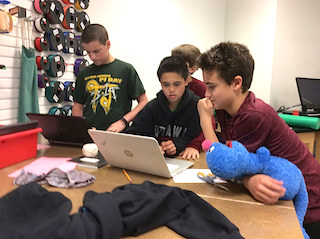
Although there are countless activities that small groups can do together, assignments that lend themselves particularly well to cooperative behavior and an enhanced sense of community are those that allow students to help each other instead of just encouraging them to work independently side-by-side.
While the activities that you offer will be determined by the needs, readiness levels, interests, and personalities of your students, there are plenty of opportunities for students to work together successfully in small groups.
Easy steps to promote effective small groups
You may want to adapt some of these simple interactive tasks for your students.
- Confirm that each team member understands how to do the assignment correctly.
- Ask for help from each other before turning to the teacher.
- Check each other’s notes or classwork at set intervals so that everyone is on task and successful.
Share the workload when there are many questions or problems to do.
- Share resources on a project.
- Combine ideas about a paper, project, or other assignment.
- Brainstorm facts to determine prior knowledge.
- Check each other’s work for neatness and accuracy before turning it in.
- Preview a reading assignment together.
- Brainstorm ideas by passing around a paper to record shared responses to a question or problem or prompt.
- Generate lists of study questions as a review.
- Create flashcards and use them to help each other prepare for an assessment or to review the days’ material.
- Celebrate small achievements and successes as each part of a shared assignment is completed.
- Share what they have learned during class in a quick two-minute review at the end of class.
- Prepare a brief report on team successes to share with the entire class at the end of the assignment.
- Remind each other about any homework assignments that are due.
- Set goals and mini-timelines for completing projects together.
- Read an assigned text together, stopping at set intervals to discuss the information they have read.
- Complete a group exit ticket.
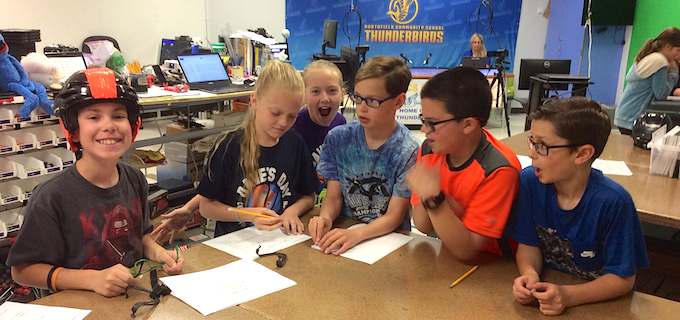
One sign your community is coming together
Students in a classroom community routinely watch out for each other. They post reminders, hand out supplies when needed, invite classmates to join in when working in groups, and share jokes. They understand the importance of a shared purpose when doing assignments and work to help each other meet the demands of that purpose. These students view themselves as a family away from home.
Although this type of class can seem to be too good to be true, we certainly see them in schools! It is well worth the effort to plan how to promote activities and attitudes that can make this wonderful classroom culture possible.


